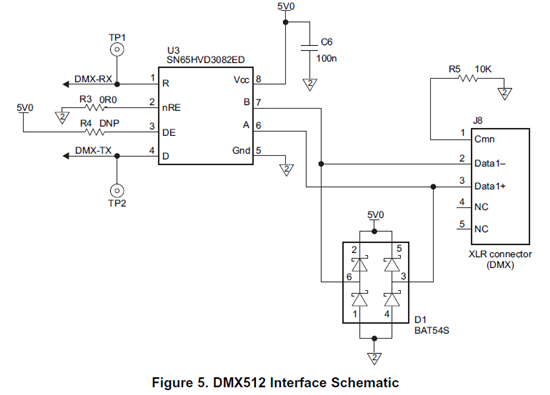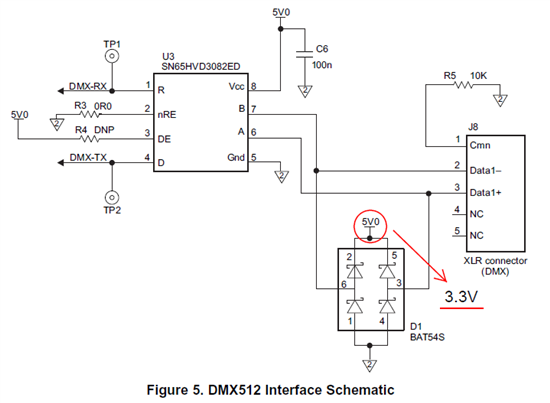Hi Everybody,
Now I use DMX512 to communication with the PWM Control Module(Piccolo + LED Driver). I find a Application Report writtend by Brett Larimore from TI. The hardware block function showed below:
My question is:
1) RS-485 XCVR SN65HVD3082ED device is optimized for signaling rates up to 200 kbps, but the DMX512 specificaiton is 250Kbps, will using the XCVR be OK?
2) SN65HVD3082ED Output VOH is 4.6V (Typ.) and the Piccolo IO Voltage is powered by 3.3V, is there any problems if SN65HVD3082ED R/D pins connecting to Piccolo SDI pins derectly?
Do me a favor, Thanks.



